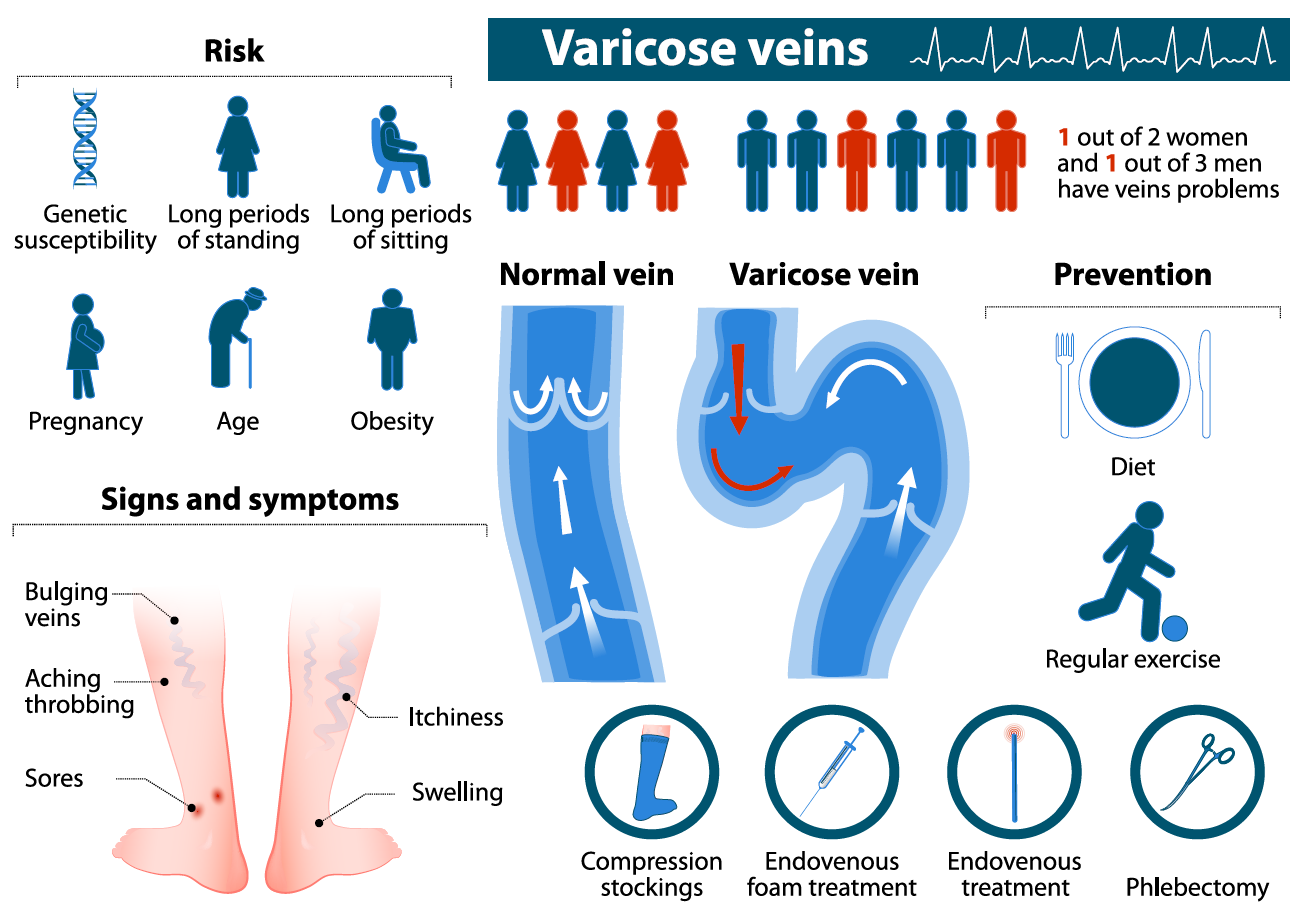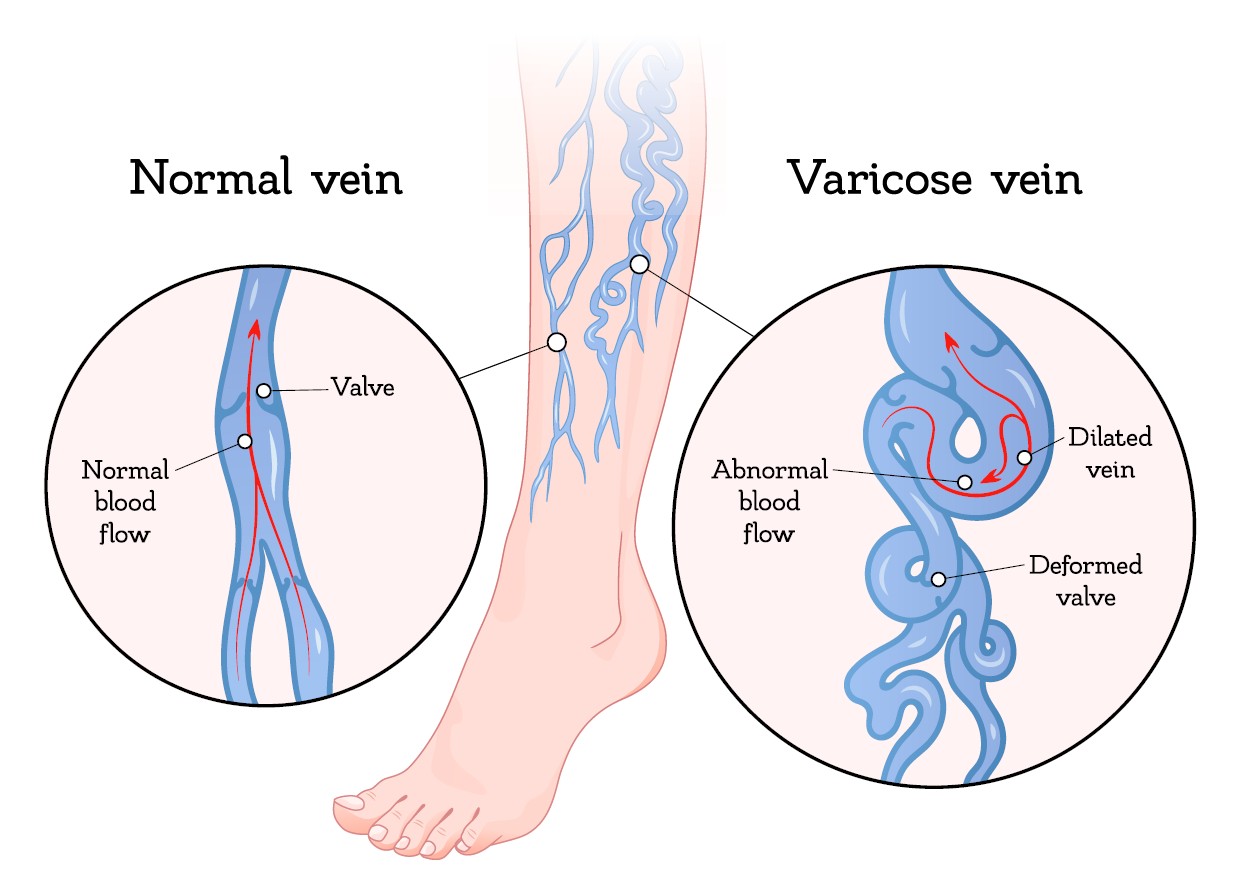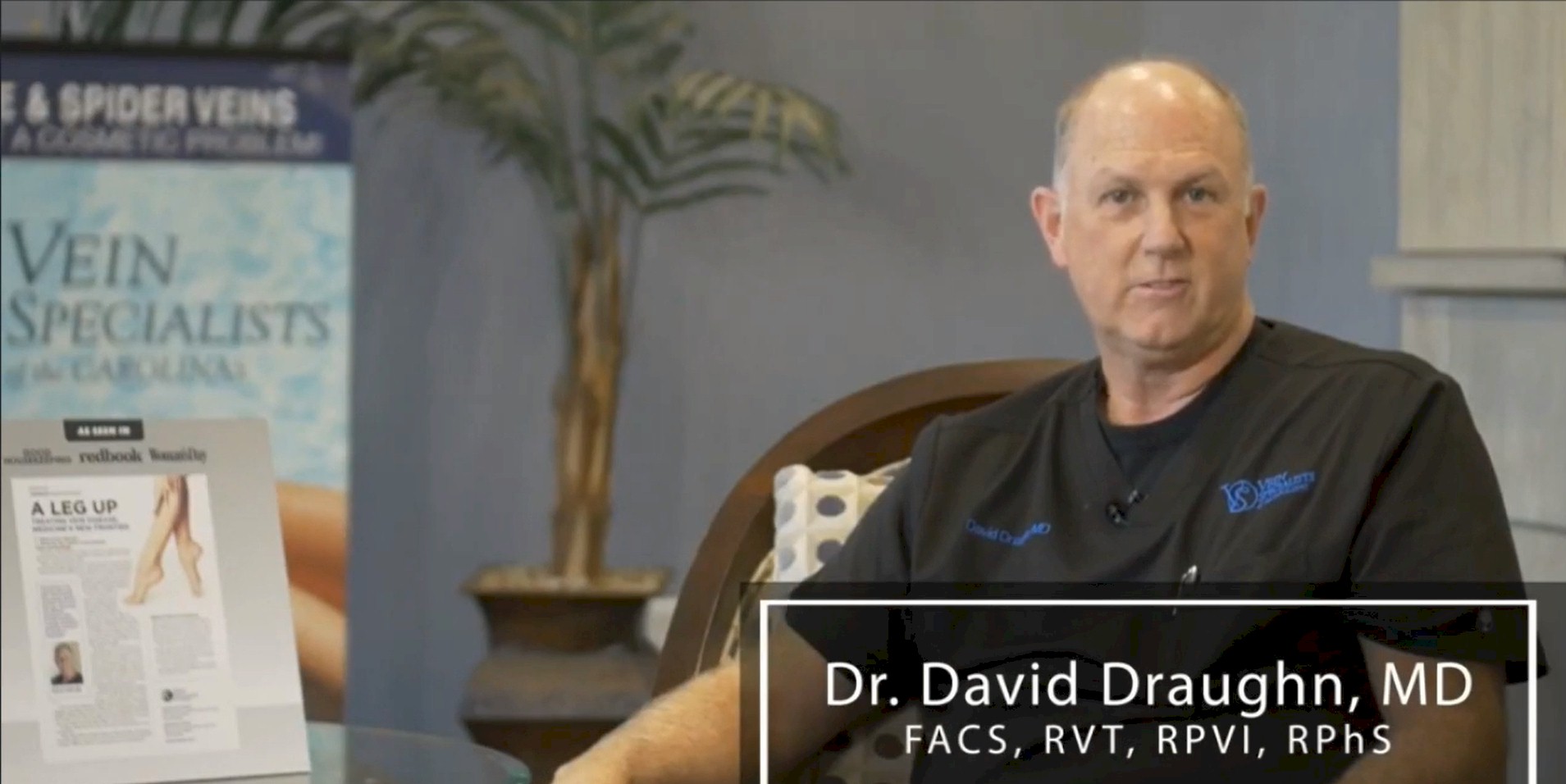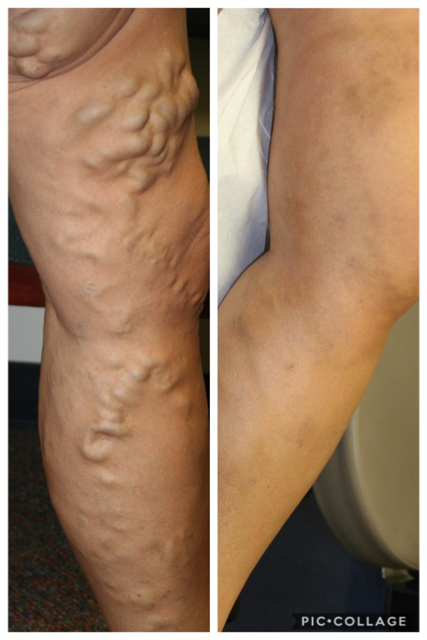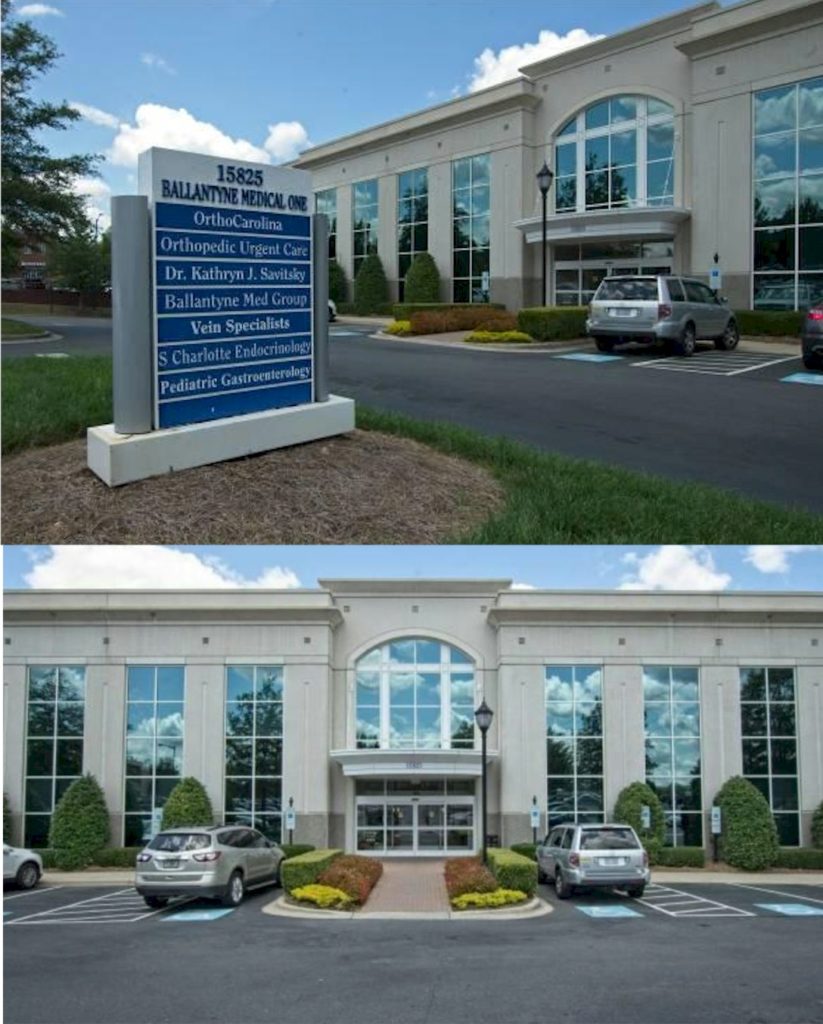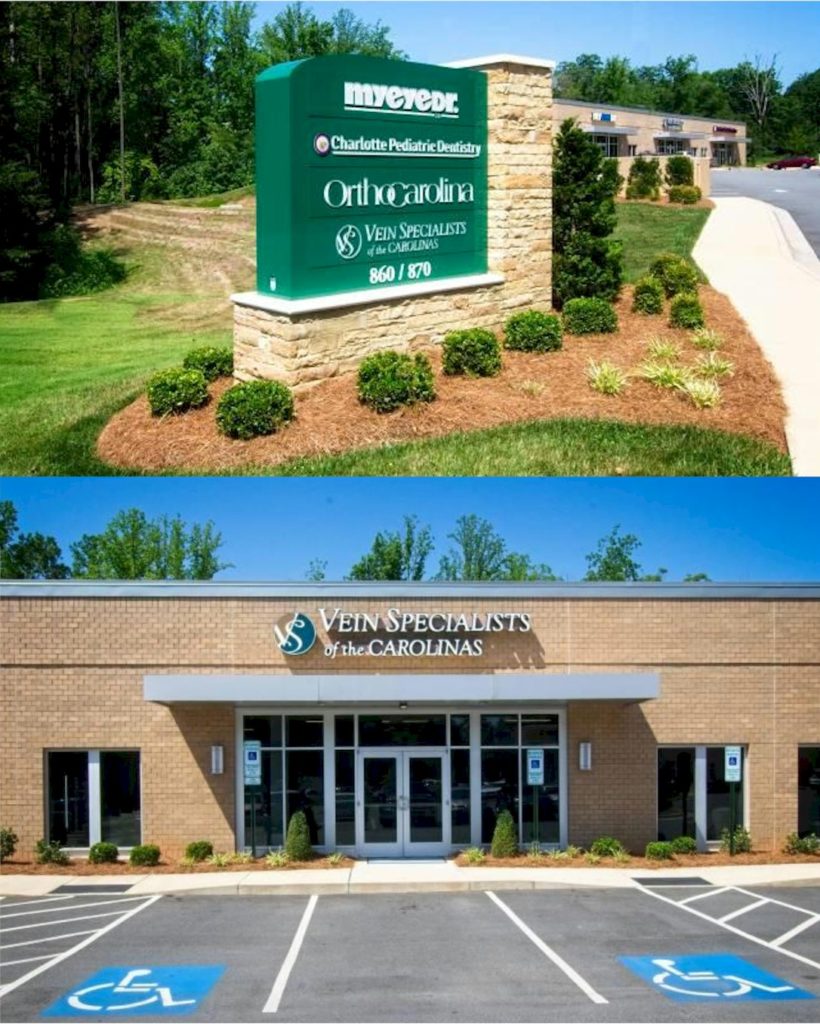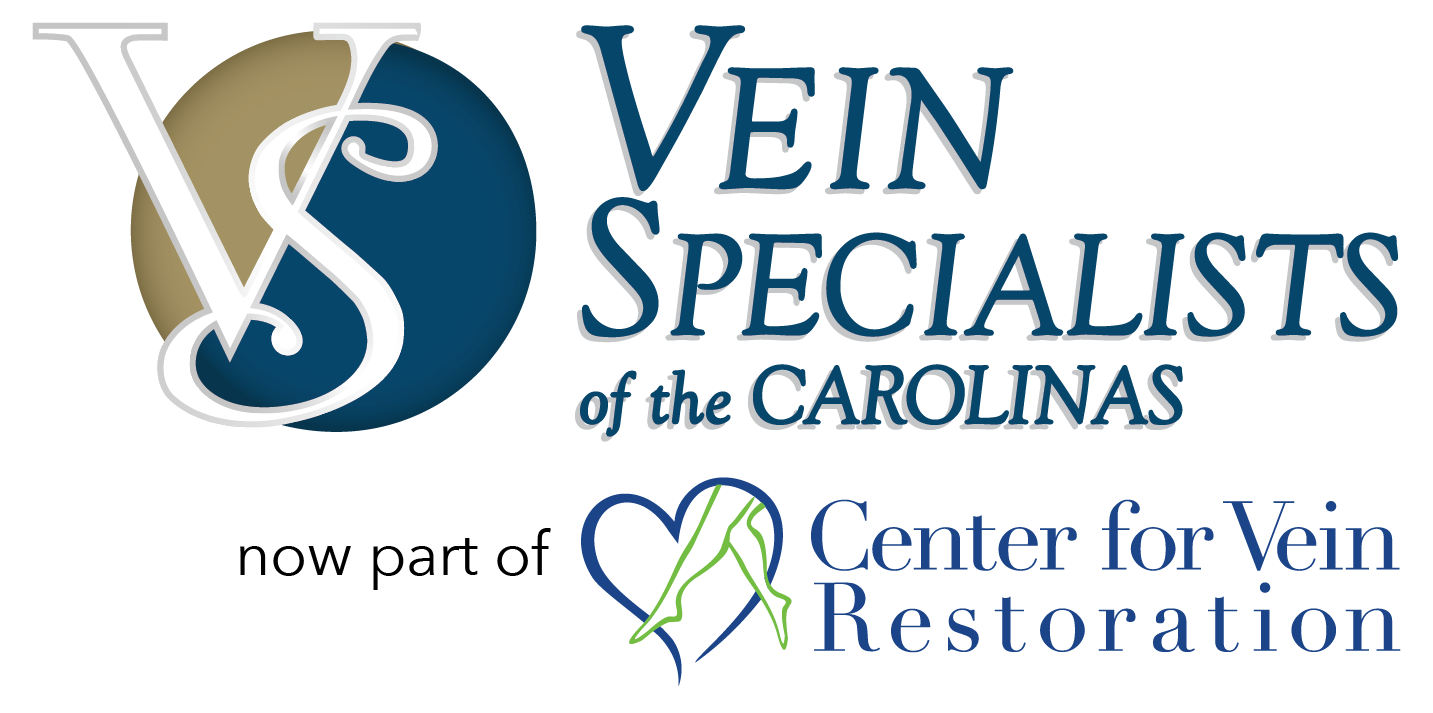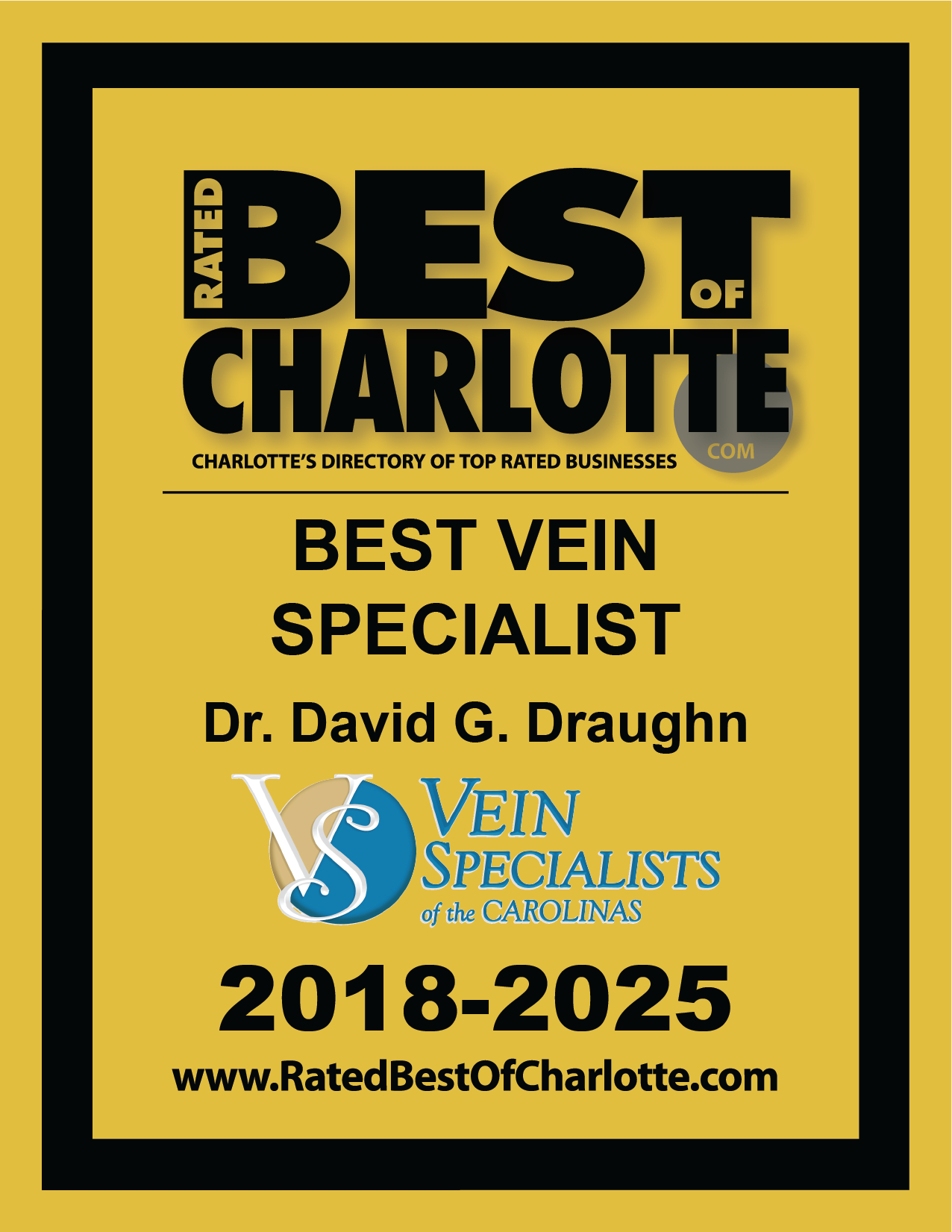Varicose Veins
Vein Specialists of the Carolinas
We Treat Hundreds of Patients With Varicose Veins a Year
What Are Varicose Veins?
Varicose Veins are those big twisty veins that make the overlying skin bulge up.
- They are also described as “ropey” or “snakey”.
- Increasing pressure in the vein makes them enlarge. The veins get longer and bigger becoming twisty like a small river.
- When sitting or standing gravity pulls the blood down causing leg pain.
Problems Associated With Varicose Veins
- For some people they just look bad.
- For many people the entire leg can hurt but may not be described as “pain”.
- Signs and Symptoms
- Aching, heavy, tired, throbbing, cramping, restlessness, stinging, burning or numbness.
- The pain usually gets worse as the day goes on.
- Sitting and standing are usually worse than walking or lying down.
- Swelling can occur and also gets worse as the day progresses. Elevating the legs usually helps tremendously. It is usually much better after sleeping over night when the legs have been even with the heart for a long time.
- Phlebitis (Flea- bite- us). This is when varicose veins actually clot. These clots are not dangerous and do not move. The clotted varicose vein will become painful, red, and hard. (See Phlebitis Section).
Causes Of Varicose Veins
Venous Reflux
- This is the most common cause.
- One way valves in the leg veins become defective and let blood flow backward.
- Reflux can occur in the deep or superficial veins in the legs, or in the pelvic veins (Pelvic Congestion Syndrome).
Venous Blockage
- Blood can clot inside the veins (DVT). This is like damming up a river. This can occur in the legs or pelvis.
- Pressure, from outside the vein, can squeeze or pinch the vein restricting flow. This occurs in the pelvis and abdomen (May-Thurner Syndrome, Nutcracker Syndrome).
Diagnosis Of Varicose Veins
- Standing Leg Ultrasound.
- Leg ultrasound done lying down can only identify blood clots but not reflux.
- Reflux can only be found on ultrasound done in standing position.
- The vast majority of Ultrasounds performed outside of a vein practice are done lying down and only look for clots in the deep veins. This is not thorough enough.
- Pelvic ultrasound may be required to look for problems higher up in the blood’s return pathway to the heart.
Varicose Vein Treatments (See Procedures Section)
- Varicose vein treatment is covered by nearly all insurance companies.
- Criteria specific to each individual insurance policy must be met first.
- Most require a conservative treatment trial consisting of leg elevation, over the counter analgesics and medical grade compression garment for a period of up to 3 months.
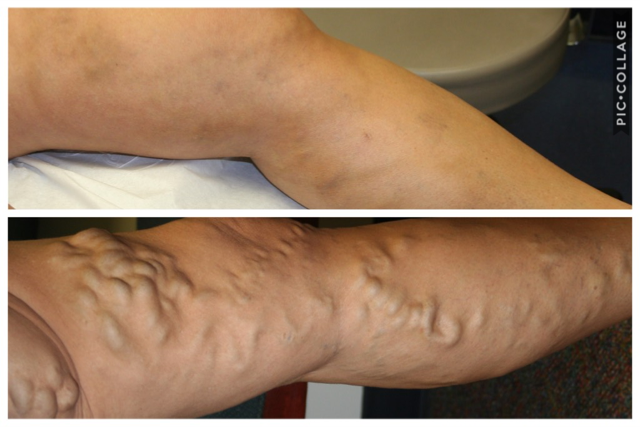
Before and After Varicose Vein Treatment
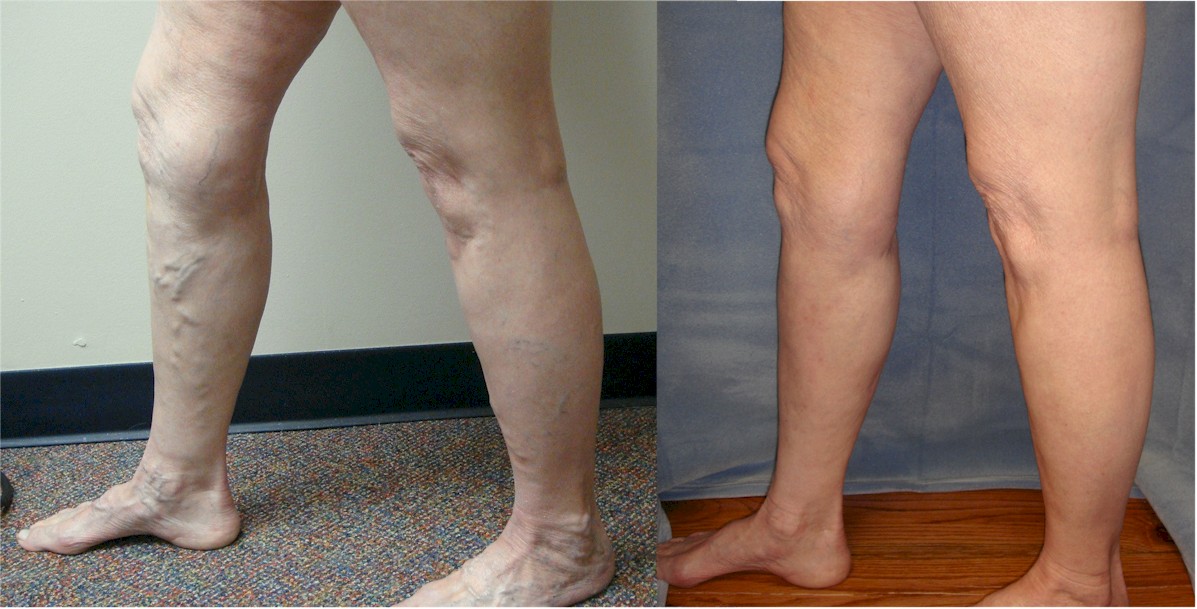
Before and After Varicose Vein Treatment
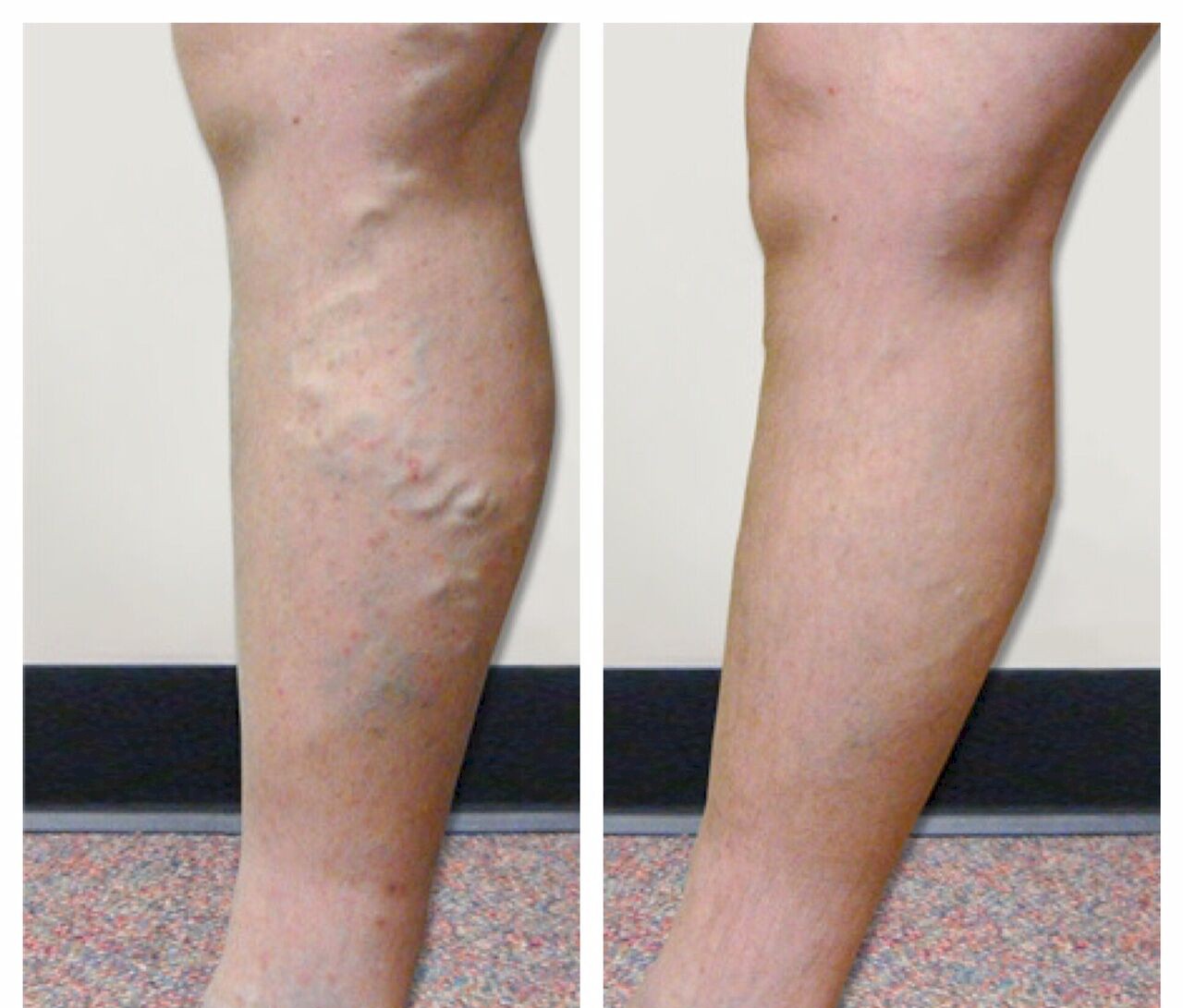
Before and After Varicose Vein Treatment
Before and After Varicose Veins Treatment
From The Blog
Spend some time this fall saying goodbye to your uncomfortable, unattractive varicose veins for good!
Varicose veins can be more than a cosmetic embarrassment, they can be downright painful for some sufferers. Those swollen vessels are usually caused by an underlying vein disorder that affects the flow of blood in the veins, leading to weakening of the veins and...
When Do Your Legs Hurt?
Holiday travel means sitting for longer periods of time in a car or plane. This of course can have an impact on blood flow and...
How Do I Know If I Have Superficial Venous Reflux?
What are the symptoms of Superficial Venous Reflux? Some people will know they have a problem simply by looking down at their legs. For some the large veins under the skin may appear swollen, kinked, twisted or ropey. They may appear bluish in color. These are known...
CHARLOTTE, NC
Phone
Hours
Mon.-Thurs.: 7:30am - 4:30pm
Friday: 7:30am-12:30pm
Address
15825 Ballantyne Medical Place,
Ste. 240
Charlotte, North Carolina 28277
GASTONIA, NC
Phone
Hours
Mon.-Thurs.: 7:30am - 4:30pm
Friday: 7:30am-12:30pm
Address
860 Summit Crossing Place,
Ste. 120
Gastonia, North Carolina 28054

